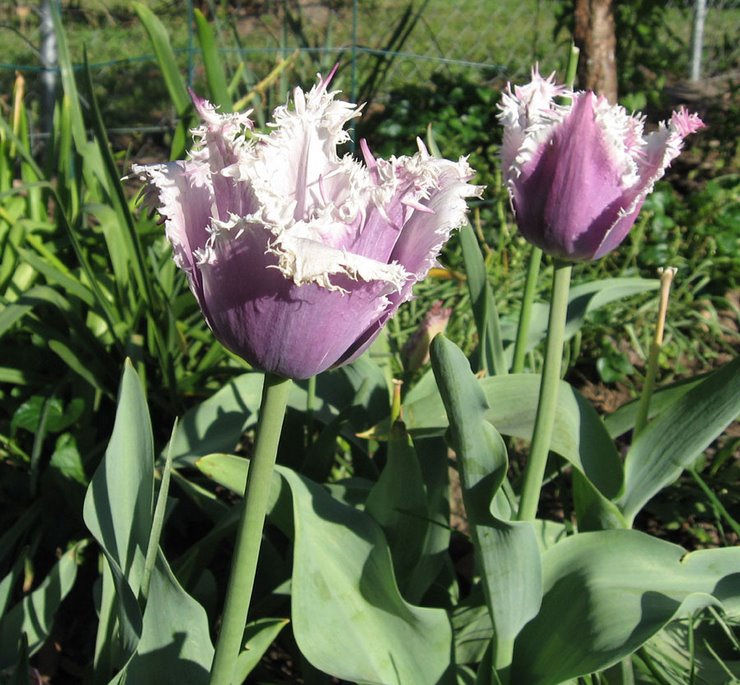Earlier this evening, I was out planting some lettuce and radishes. In the place of a withering cucumber vine, I put in a row of lettuce that I (and my bunnies) will enjoy later this fall. A couple of weeks ago I'd planted beets and bush beans to replace the sweet corn. Succession planting is where as one crop ends, you plant another, and enjoy fresh vegetables up until winter.
Thursday, August 30, 2012
Monday, August 27, 2012
Easy Houseplants: Coleus
Allergy Index Scale: 1
Tender perennial
Shade, 6 inches - 3 feet
Coleus is grown for its foliage rather than flowers, and comes with a variety of colors, patterns and shapes of leaves. It is a good foliage plant for shady areas or an easy houseplant for sunny windows.
Coleus is easy to propagate, by rooting a cutting in water. Cut a piece of stem just below the leaves, and pinch off any leaves that would be underwater. Once roots are well formed, it's ready to plant. in a light, well-drained soil. Do not plant outside until the temperature stays over 50 degrees.
Tender perennial
Shade, 6 inches - 3 feet
Coleus is grown for its foliage rather than flowers, and comes with a variety of colors, patterns and shapes of leaves. It is a good foliage plant for shady areas or an easy houseplant for sunny windows.
Coleus is easy to propagate, by rooting a cutting in water. Cut a piece of stem just below the leaves, and pinch off any leaves that would be underwater. Once roots are well formed, it's ready to plant. in a light, well-drained soil. Do not plant outside until the temperature stays over 50 degrees.
Sunday, August 19, 2012
Feeding Birds: Goldfinches
One colorful and delightful bird commonly seen at birdfeeders is the goldfinch. They are sociable little birds and spend much of the year in lively flocks, and are known for their acrobatics. They prefer black oil sunflower seeds, thistle, or niger.
Goldfinches will use about any kind of feeder: hopper, platform or hanging feeders, and are happy to eat the seed spilled below feeders. Some people have reported great success attracting them by offering thistle in sock-type mesh feeders. If you have trouble with other birds chasing goldfinches away to eat the seed, you can try an upside-down feeder, where the goldfinches will happily cling to get the seed.
Goldfinches will use about any kind of feeder: hopper, platform or hanging feeders, and are happy to eat the seed spilled below feeders. Some people have reported great success attracting them by offering thistle in sock-type mesh feeders. If you have trouble with other birds chasing goldfinches away to eat the seed, you can try an upside-down feeder, where the goldfinches will happily cling to get the seed.
Wednesday, August 15, 2012
Favorite Flowers: Purple Coneflower
Perennial, zone 3
Full sun, 2-3 feet tall
One of the perennial flowers that most reliably handles the hot Kansas summers without pampering is the purple coneflower, or echinacea. This native plant can handle the extremes of both winter and summer and keep going.
Originally their flowers were a rosy pink color, but they are also available now in white, yellow, orange, and red. They bloom in the summer and early fall. If you deadhead them during the summer, they will keep blooming for many weeks. Leaving the seedheads at the end of season provides seeds that are attractive to native birds such as goldfinches.
Sunday, August 5, 2012
Compost Weekend, part 2
Yesterday I told about emptying my tumbling composters, and spreading the compost. Today I want to tell about refilling the composters to begin another batch.
Saturday, August 4, 2012
Compost Weekend
This week my current batch of compost looked ready to go, so today I emptied out my tumbling composters, and spread the finished compost in my garden. How do you know the composting process is complete? When you can no longer recognize the original materials, and it just looks like nice dark, loose garden soil.
I put an inch or two thick layer of compost over the surface of selected flower and veggie beds. Next time, I'll choose other beds, until hopefully every garden area will be so blessed over the course of the summer.
I put an inch or two thick layer of compost over the surface of selected flower and veggie beds. Next time, I'll choose other beds, until hopefully every garden area will be so blessed over the course of the summer.
Subscribe to:
Posts (Atom)
Fringed Tulips

